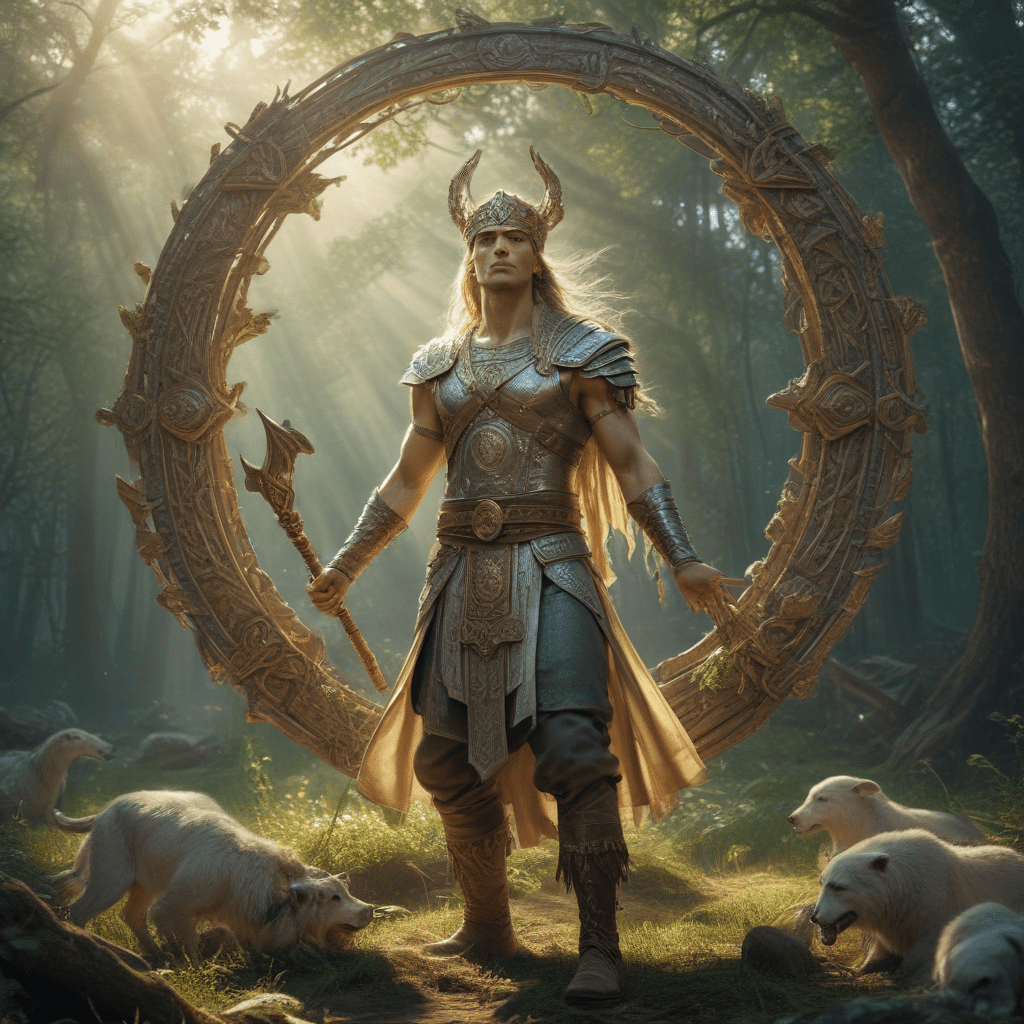1. Introduction: The Slavic Mythological Cosmos
Slavic mythology, originating in the ancient beliefs and traditions of Slavic-speaking peoples, depicts a complex and multifaceted cosmos teeming with deities, spirits, and mythical creatures. This mythological realm embraces a profound cyclical understanding of time and existence, where the concept of renewal permeates all aspects of the universe.
2. The Perennial Cycle of Renewal
The Slavic mythological cycle of renewal mirrors the natural world's seasonal transitions, capturing the ebb and flow of life, death, and rebirth. This cycle is symbolized by the eternal battle between opposing forces: light and dark, life and decay, summer and winter. The ceaseless interplay between these forces drives the cyclical nature of the universe, ensuring its constant rejuvenation and renewal.
3. The Goddess Morana: Embodiment of Winter's End
Morana, a prominent figure in Slavic mythology, embodies the cold and darkness of winter. As the goddess of death, winter, and rebirth, she represents the culmination of the old cycle and the promise of new beginnings. Morana's symbolic death at the end of winter marks the triumph of life over decay, heralding the arrival of spring.
4. The Rites of Spring: Triumph Over Death
The Slavic celebration of spring, known as the Rites of Spring, is an exuberant expression of the victory over winter and the renewal of life. These rituals, typically held on the spring equinox, involve lively festivities, traditional music, and the burning of effigies of Morana, symbolizing the banishment of winter's grip.
5. The Kupala Festival: Celebration of Summer's Power
Kupala, a vibrant midsummer festival, is dedicated to Kupalo, the god of the summer sun. Bonfires are lit, and people leap over them for purification, while dances, songs, and rituals celebrate the height of summer's vitality. The festival marks the longest day of the year, symbolizing the sun's peak power before the gradual decline toward autumn.
6. The Perunic Fire: Cleansing and Purification
The Perunic fire, named after the Slavic god of thunder and lightning Perun, holds great significance in the Slavic concept of renewal. This sacred flame is kindled during rituals and festivals, serving as a powerful symbol of cleansing, purification, and the renewal of life forces. Leaping over or walking through the flames is believed to bring blessings, protection, and healing.
7. The Birth of Yarilo: The Sun God's Renewal
Yarilo, the Slavic god of the spring sun, represents the rebirth and renewal that follows winter's darkness. His birth is celebrated on the spring equinox, marking the return of warmth, fertility, and abundance. Yarilo's youthful energy and enthusiasm symbolize the renewal of the cycle of life and the promise of a prosperous season ahead.
8. The Harvest Festival: Gratitude and Renewal
The Slavic Harvest Festival is a joyous celebration that expresses gratitude for the abundance bestowed upon the people throughout the growing season. Feasts, rituals, and traditional songs mark the end of the agricultural cycle and acknowledge the renewal of the land's fertility. The harvest represents not only nourishment but also the culmination of a year's hard work and the promise of future bounty.
9. The Winter Solstice: Return of the Light
The winter solstice is a significant turning point in the Slavic mythological calendar, marking the shortest day of the year and the gradual return of the sun's light. Rituals and festivities held during this period celebrate the impending renewal of warmth and growth. Bonfires are lit, prayers are offered, and traditional customs are observed to honor the resilience and hope associated with this darkest time of year.
10. Slavic Rituals for Renewal: Traditional Practices
Slavic mythology encompasses a vast array of rituals and practices designed to promote renewal and bring blessings to individuals, communities, and the land itself. These rituals vary across regions and cultures but share a common thread of reverence for the natural world and the cyclical patterns of life and death. From spring cleansing rituals to midsummer bonfires and autumn harvest festivals, these traditions continue to perpetuate the Slavic tradition of honoring the transformative power of renewal.
FAQs
Q: How do Slavic myths and legends compare to those of other cultures?
A: Slavic mythology exhibits unique features andilarities with other mythologies. It shares themes of creation, renewal, and the battle between good and evil but presents distinct characters, deities, and narratives that reflect the cultural and geographical context of the Slavic-speaking peoples.
Q: What is the significance of nature in Slavic mythology?
A: Nature is a central element in Slavic mythology, with many deities, spirits, and rituals connected to natural phenomena. The cycles of the seasons, the elements, and the land itself play vital roles in the mythology's narratives and beliefs.
Q: How does the concept of dualism influence Slavic mythology?
A: Dualism is a prevalent aspect of Slavic mythology, evident in the interplay of opposing forces, such as light and darkness, good and evil, and life and death. This binary perspective shapes the mythological narratives and the roles of various deities and beings within the cosmos.





